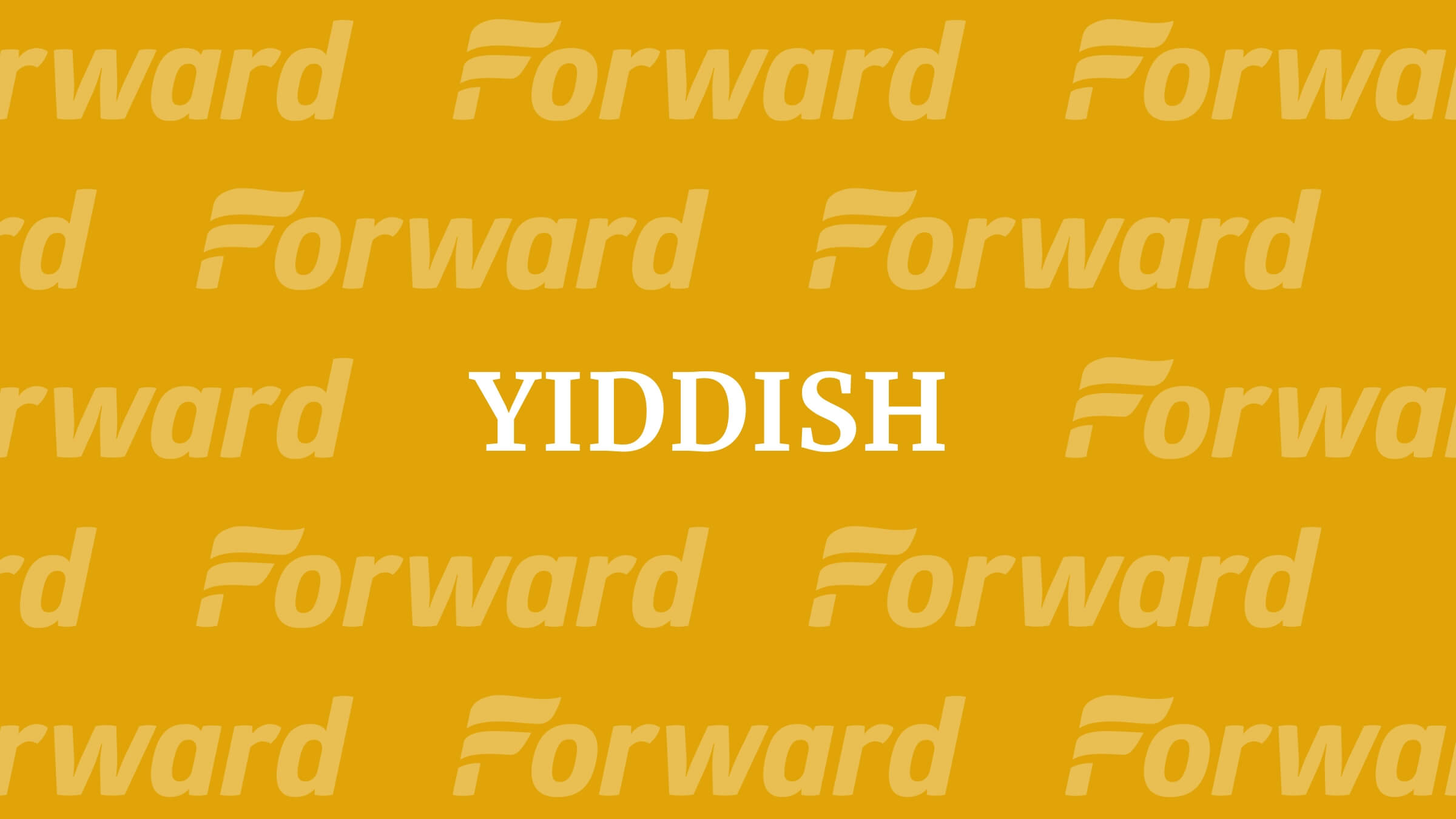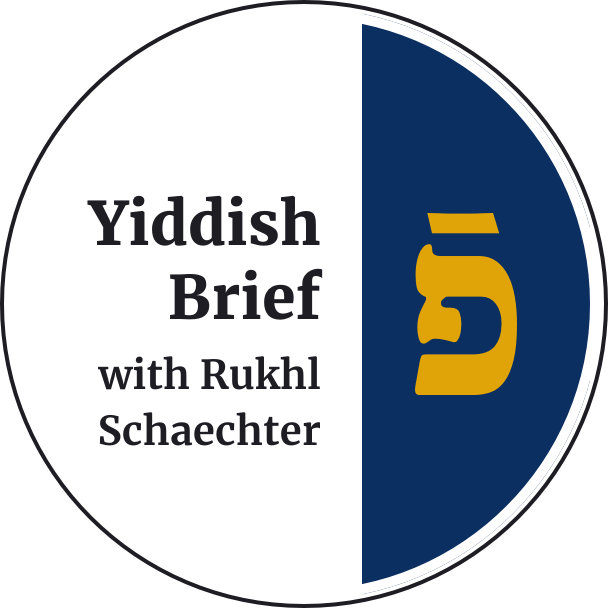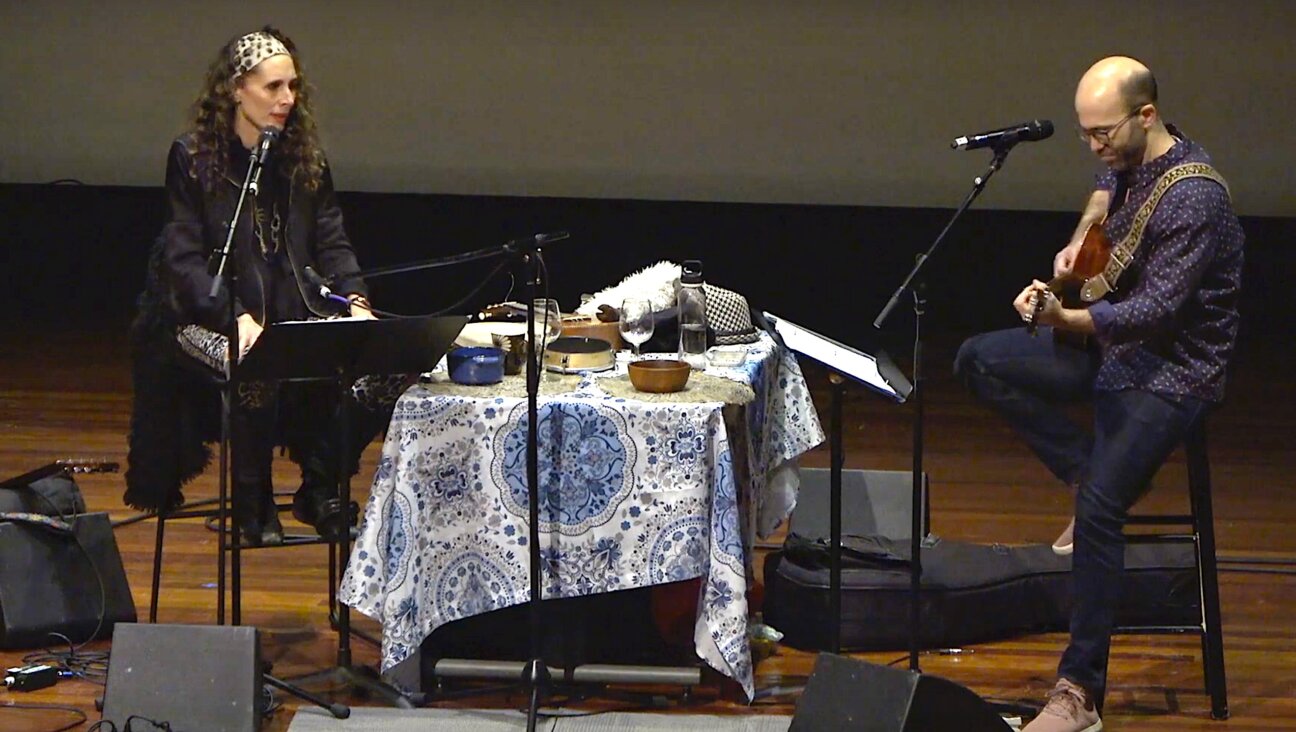Poet Abraham Sutzkever’s memoirs of the Vilna Ghetto are now in English

Graphic by Angelie Zaslavsky
Abraham Sutzkever
From the Vilna Ghetto to Nuremberg: Memoir and Testimony
Edited and translated by Justin D. Cammy
Afterword by Justin D. Cammy and Avraham Novershtern
McGill-Queen’s University Press (2021), 488 pp.
Although Abraham (Avrom, in Yiddish) Sutzkever is usually referred to as one of the greatest Yiddish poets in the twentieth-century, he also played a crucial role in rescuing important manuscripts, books and other treasures from the Nazis when they occupied the Lithuanian city of Vilna. After being miraculously airlifted from a Belarussian partisan encampment in the spring of 1944, while Vilna was still under German occupation, and brought safely to Moscow, he immediately took it upon himself to record his memories of the Vilna Ghetto.
The memoirs are dated summer 1944 but, in fact,
the book, “From the Vilna Ghetto”, wasn’t published until the beginning of 1946. Those two years were filled with dramatic events: the liberation of Vilna, the end of the war, Sutzkever’s journey to Nuremberg to testify at the trial of Nazi war criminals, and his emigrations to Poland and then on to Paris and Mandate Palestine in 1946.
The new English translation by Justin Cammy, “From the Vilna Ghetto to Nuremberg,” includes not only Sutzkever’s memoirs of the Ghetto, but also his testimony in Nuremberg and his descriptions of encounters with Jewish personalities in the Moscow literary scene such as Ilya Ehrenburg, Peretz Markish and Solomon Mikhoels.
As Professors Cammy and Avraham Novershtern explain in their afterword, Sutzkever’s memoirs are the product of a relatively short historical period during which the book was written and published. In Moscow, Sutzkever and his wife Freydke were received as heroic Jewish fighters. Sutzkever became a symbolic figure who embodied the Jewish resistance against Nazi occupation. Because he was also known as a great poet, several of his ghetto poems had appeared in the Soviet press. In April 1944 he delivered a speech at the third assembly of the Jewish Anti-Fascist Committee in Moscow. Simply stated, Sutzkever’s importance for Soviet war propaganda was tremendous.
Ehrenburg had invited Sutzkever to write a report about the Vilna ghetto for the “Black Book,” a documentary history of the Holocaust in Soviet territory. The history of this project is complicated. Ehrenburg wanted to publish the book in Russian for a Soviet audience, while the leaders of the Jewish Anti-Fascist Committee were more interested in a Yiddish publication for an international Jewish readership. In 1945 Ehrenburg was sidelined from the project. In the end, the Soviet authorities prohibited the publication of a Russian edition of the “Black Book,” even though the book was already typeset. A complete edition of the Russian “Black Book,” including Sutzkever’s chapter on the Vilna ghetto, wasn’t published in Moscow until 2015.
In fact, there were two versions of Sutzkever’s memoirs in Yiddish published in 1946: one in Moscow and one in Paris. A year later, a third Yiddish edition appeared in Buenos Aires and a Hebrew translation came out in Tel Aviv. “This transnational publication record deflates claims of silence from Holocaust survivors and unwillingness within the Jewish world to talk about recent events,” Cammy and Novershtern write in their afterword. They contend that the various Yiddish editions of Sutzkever’s book are a clear indication that Jewish communities around the world felt it was necessary to publicize personal reports about the Holocaust as quickly as possible.
But Sutzkever also had other responsibilities in the Soviet Union. Just after the liberation of Vilna in July 1944 he returned there to work with his friends, Abba Kovner and Shmerke Kaczerginski on recovering and protecting the Jewish cultural treasures they had buried beneath the rubble of the city. In September he was once again in Moscow, where his pregnant wife awaited him. The Vilna community depended on Sutzkever’s help, because of his special relationship with the Soviet administration, while in Moscow people were waiting for his report about the Vilna Ghetto.
In his book, Sutzkever brings together his personal recollections with testimony from other Jews in the Ghetto. Cammy and Novershtern contend that this synthetic documentary style reflects a certain influence from Ehrenburg’s war journalism, which was highly popular in the Soviet Union, and emphasize the difference between Sutzkever’s lyrical poetry and his dry and objective prose, which bears no trace of his poetic style. Interestingly, Sutzkever’s collections of poetry, “The Fortress” and “Poems from the Ghetto”, were never published in the Soviet Union. The Jewish Anti-Fascist Committee sent them to New York, where they were published by the Communist-leaning Yiddish publishing house, IKUF.
It’s noteworthy that Sutzkever later showed no interest in his book of memoirs about the Vilna Ghetto, although this theme remained important in his writing. Cammy and Novershtern offer the theory that Sutzkever himself didn’t care for the dry prosaic style of the book, which had indeed been edited according to Soviet ideological strictures. Sutzkever believed, as Professor Ruth Wisse suggests that “poetry would keep alive that which history destroys”.. It’s also possible that during the Cold War, Sutzkever simply didn’t want to draw attention to his cooperation with the Soviet authorities in Moscow in the 1940s, in order to avoid accusations of Communist sympathies.
“From the Vilna Ghetto to Nuremberg” acquaints the English-language reader with an important document about the Holocaust. It’s especially worthwhile to read the afterword, which reveals in detail the complicated process of creating this remarkable book, an exemplary scholarly feat.
























